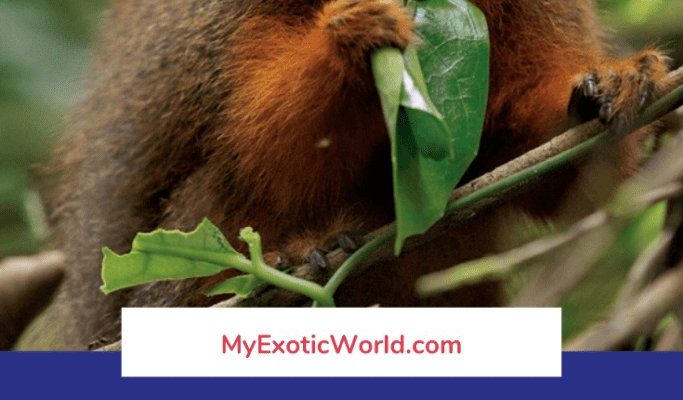
The titi monkey’s approach to eating is a blend of foraging skills and social interactions. They’re not just solitary snackers; these monkeys often work together. That’s right! When it comes to finding food, teamwork is key. It’s like watching a well-choreographed dance, where every member plays a part in ensuring the group eats well. Let’s dive deeper into their diet and how they manage to hunt their meals in the wild.
Understanding the Titi Monkey’s Diet
The titi monkey primarily feeds on fruits, leaves, flowers, and insects. Their diet is quite varied, which is essential for their survival in the wild. Since they live in the dense forests of the Amazon, they have adapted to eat whatever is abundant in their environment. Picture yourself at a buffet filled with vibrant fruits and veggies; the titi monkey approaches its meals with the same enthusiasm.
Fruits are a major part of their diet, especially berries and small tropical fruits. These sweet treats not only provide the energy they need to jump and play but also help in seed dispersal, which is crucial for the forest ecosystem. By consuming fruits and then moving to different areas, they spread seeds through their droppings, helping new plants to grow.
Additionally, titi monkeys enjoy munching on leaves and flowers. While these might not be the most exciting foods for a monkey, they are packed with essential nutrients. Titi monkeys often choose tender, young leaves, which are more nutritious than older, tougher ones. And let’s not forget about insects. Although they are not the main part of their diet, they do provide a protein boost, especially when fruits are less abundant.
The Role of Social Groups in Foraging
Have you ever tried finding food alone in a large grocery store? It can be overwhelming! Titi monkeys do things a bit differently. They’re incredibly social creatures and often forage in small family groups. This social structure helps them find food more efficiently.
When foraging together, titi monkeys can cover more ground and locate food sources quickly. They communicate with each other through a series of vocalizations and body language, like a secret code just for them. You might see one monkey chirp excitedly when spotting ripe fruit, alerting its buddies to come over for a feast.
Being in a group provides safety too. While one or two monkeys are focused on finding food, others keep watch for predators. This teamwork not only ensures that they eat well, but also helps protect them from lurking dangers like hawks or snakes. It’s all about having each other’s backs!
Hunting Strategies of Titi Monkeys
Now, you might think that titi monkeys primarily munch on fruits and leaves and don’t do much hunting. But that’s not entirely true! While they are not predators in the traditional sense, they do engage in specific hunting behaviors to catch insects or small animals.
One method titi monkeys use is called gleaning. Picture them moving cautiously through the trees, carefully inspecting bark and leaves for hidden insects. They can deftly peel back layers of tree bark to expose tasty bugs underneath. Talk about a clever dining technique!
Titi monkeys also utilize their long, agile tails for balance as they reach out to grab prey. They might even join forces with their group, creating a faster and more effective hunting strategy. Imagine a group of friends coordinated in a scavenger hunt, each skilled in spotting different things. That’s how titi monkeys operate!
Seasonal Diet Changes
Seasons in the rainforest can be unpredictable, which means the titi monkey’s diet changes throughout the year. During the rainy season, fruits are abundant, providing a smorgasbord of options. But when the dry season rolls around, fruits may become scarce.
During these tougher times, titi monkeys often switch to other food sources, like leaves and flowers. They’ve adapted to make the most out of the resources available to them, which is pretty impressive! It’s like going from a summer BBQ to a cozy winter stew. They find ways to fill their bellies no matter the season.
These seasonal shifts are crucial for their survival. Monkeys that adapt to their changing environment are more likely to thrive. So, when you think of the titi monkeys, remember that they’re not just cute; they’re smart and adaptable creatures doing what they need to survive.
Impact of Diet on Social Behavior
The diet of titi monkeys also influences their social structure and behaviors. When food is plentiful, it fosters a relaxed and playful atmosphere among the group. They spend time grooming each other and playing, which strengthens their bonds. After all, who doesn’t feel more friendly after a full meal?
However, if food becomes scarce—like during the dry season—things can get a bit tense. Competition for limited resources might lead to some chattering and squabbling among the group. Here’s the thing: a healthy diet not only keeps them physically fit but also helps maintain their social harmony.
Additionally, their foraging habits can influence their territory. Titi monkeys often stay close to areas rich in food sources. If they find a great spot, they may defend it fiercely. It’s a constant balancing act between finding food and keeping their social structures intact.
Conservation Challenges Affecting Diet
Unfortunately, titi monkeys face numerous threats that impact their diet and survival. Habitat loss due to deforestation is a major concern, as it reduces the availability of food sources. The rainforests, their home, are disappearing at an alarming rate.
As their territory shrinks, titi monkeys often have to venture further to find enough food. This not only increases their risk of encountering predators but also makes it more challenging for them to maintain their social groups. Conservation efforts are crucial to protecting these habitats and ensuring that titi monkeys can thrive.
Moreover, climate change can also affect the availability of fruits and other food sources. Changes in weather patterns can lead to fluctuations in food supply, forcing these monkeys to adapt yet again. It’s a tough world out there, and every little bit of help counts when it comes to conservation.
The titi monkey, with its vibrant personality and charming behavior, is an incredible example of how animals adapt to their environment. From their varied diet of fruits, leaves, and insects to their cooperative foraging strategies, these monkeys demonstrate the power of teamwork in the wild.
Understanding their dietary habits not only sheds light on their fascinating lifestyles but also highlights the importance of preserving their habitats. With ongoing threats like deforestation and climate change, supporting conservation efforts is vital for ensuring that future generations can continue to enjoy the antics of these delightful animals.
The next time you spot a monkey swinging from a branch, take a moment to appreciate the intricate web of survival strategies, teamwork, and social dynamics that sustain their lives. It’s a wild world out there, and the titi monkey is a small yet mighty player in it.

